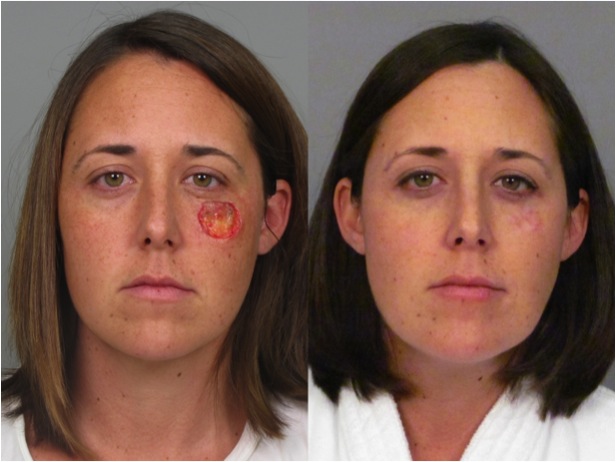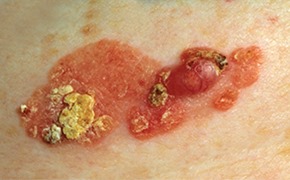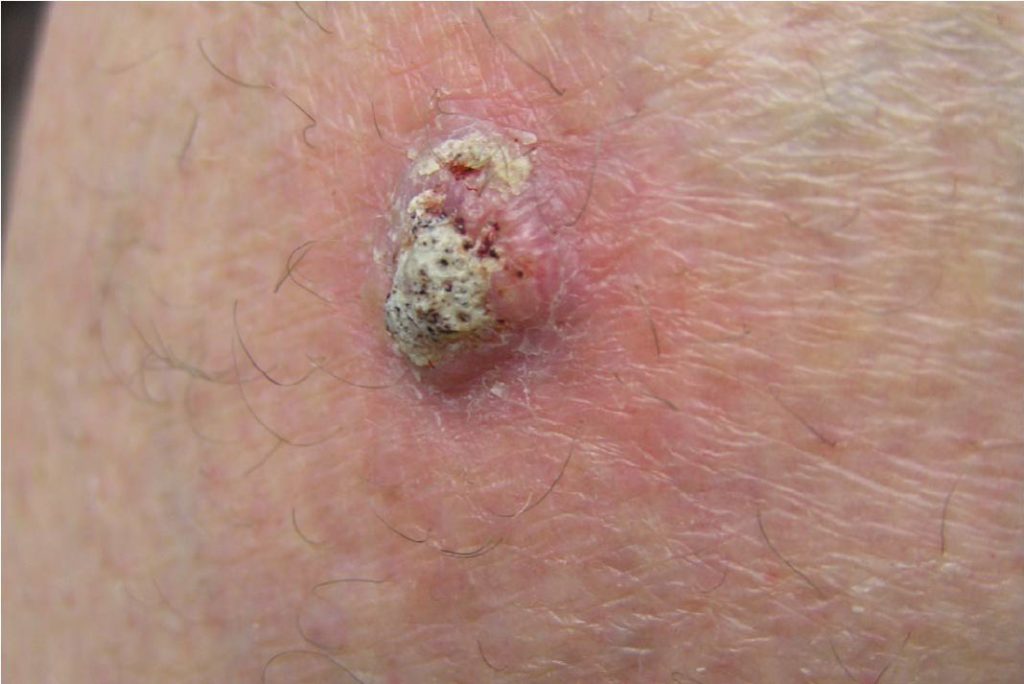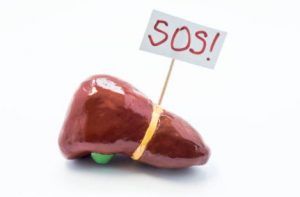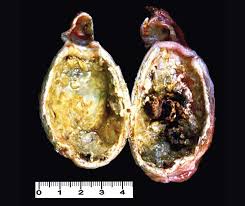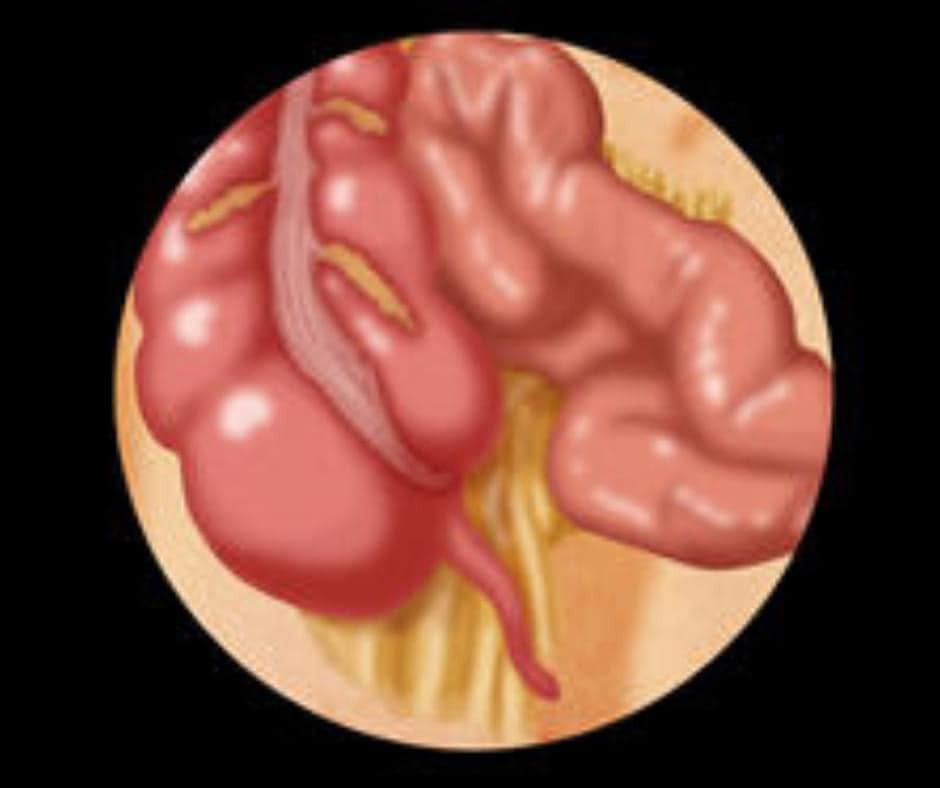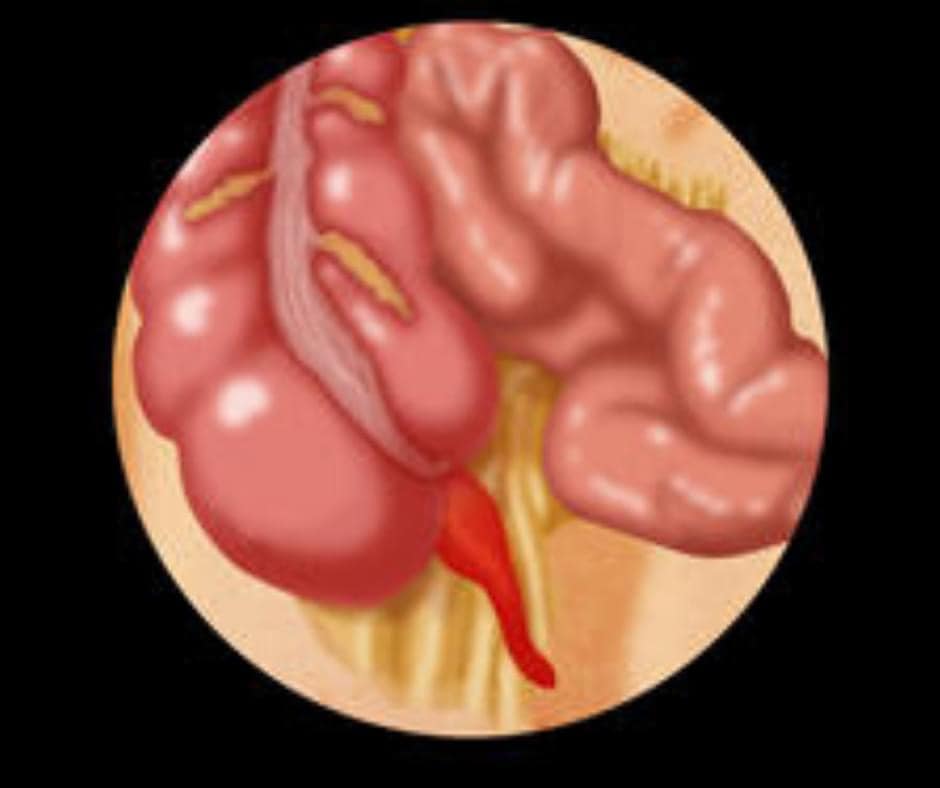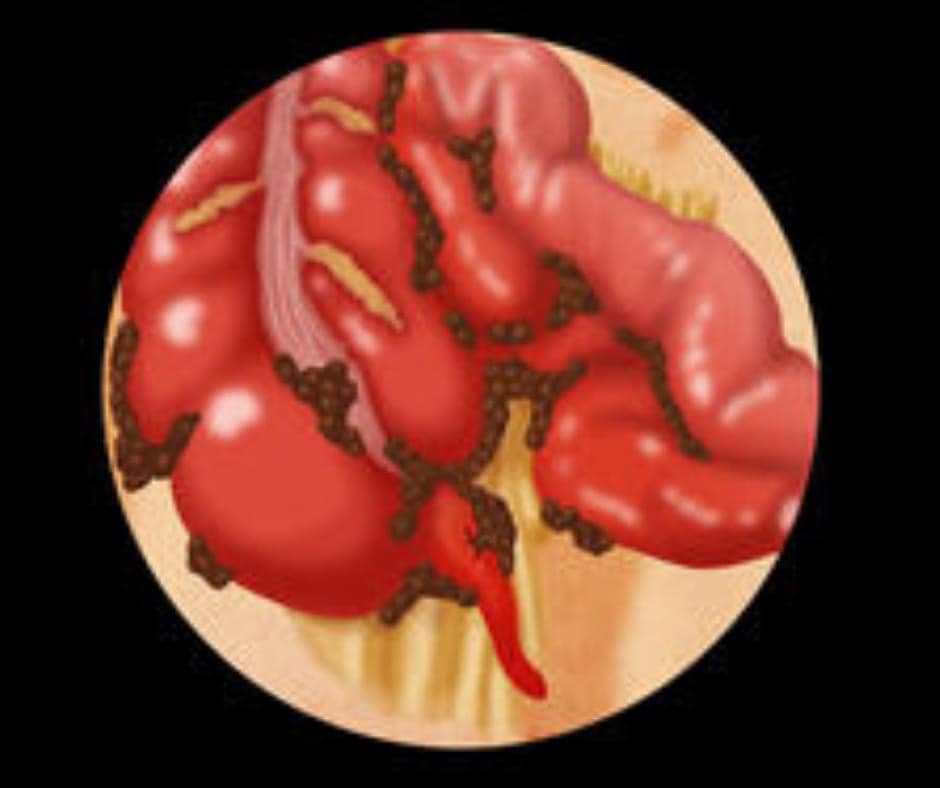Robotic Surgery
A pretty cool article about me and what I do published in the April issue of The Journal: the benefits of robotic surgery
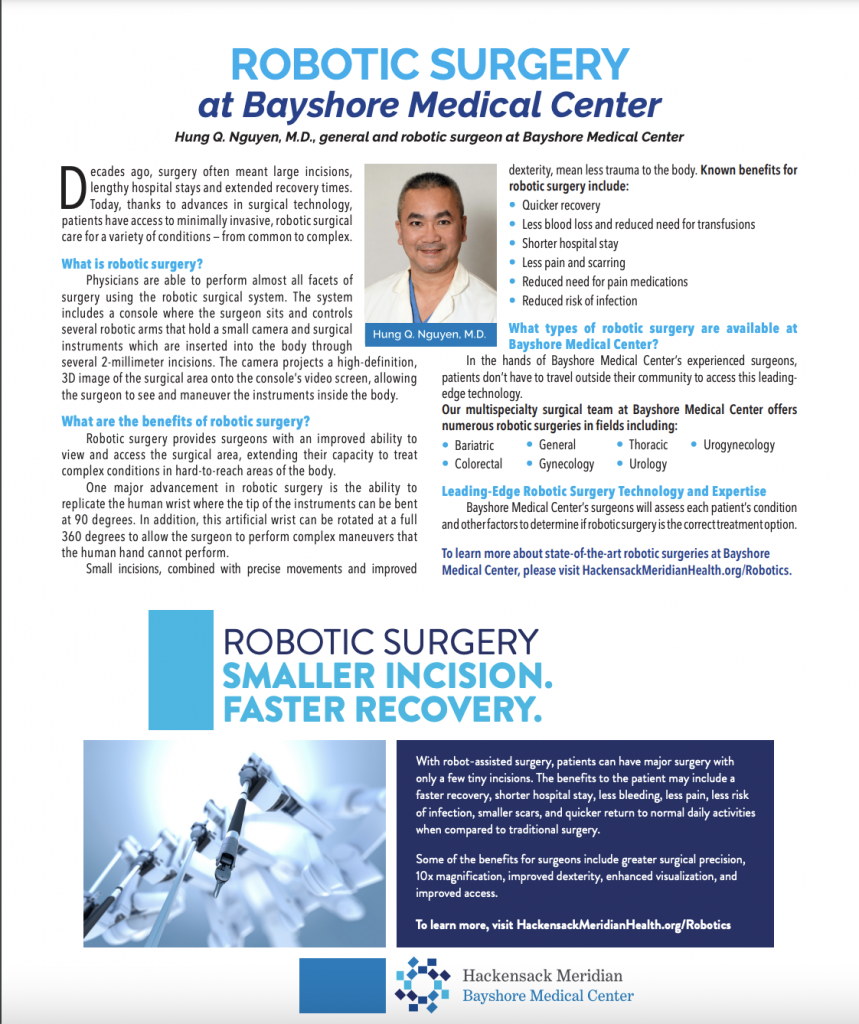
What is Anal Prolapse?
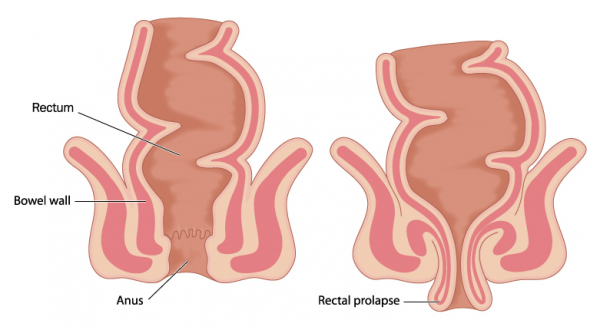
Prolapse occurs when a body part slips from its normal position. The organs that are usually involved include the uterus, the vagina, the bladder or the rectum. Prolapse is not a medical emergency but gets worse over time. When the rectum slides from its normal position inside the pelvis out through the anus, it is called rectal prolapse. Symptoms include feeling like you’re sitting on a ball after using the bathroom, feeling a bulge outside of your anus, or seeing a red mass outside of your anus. Pain, bleeding, infection or obstruction are some complications resulting from rectal prolapse.Corrective surgery is required to restore both normal aesthetic and more importantly normal function.(Image via piedmontcolorectal.com)
What is Intestinal Obstruction?
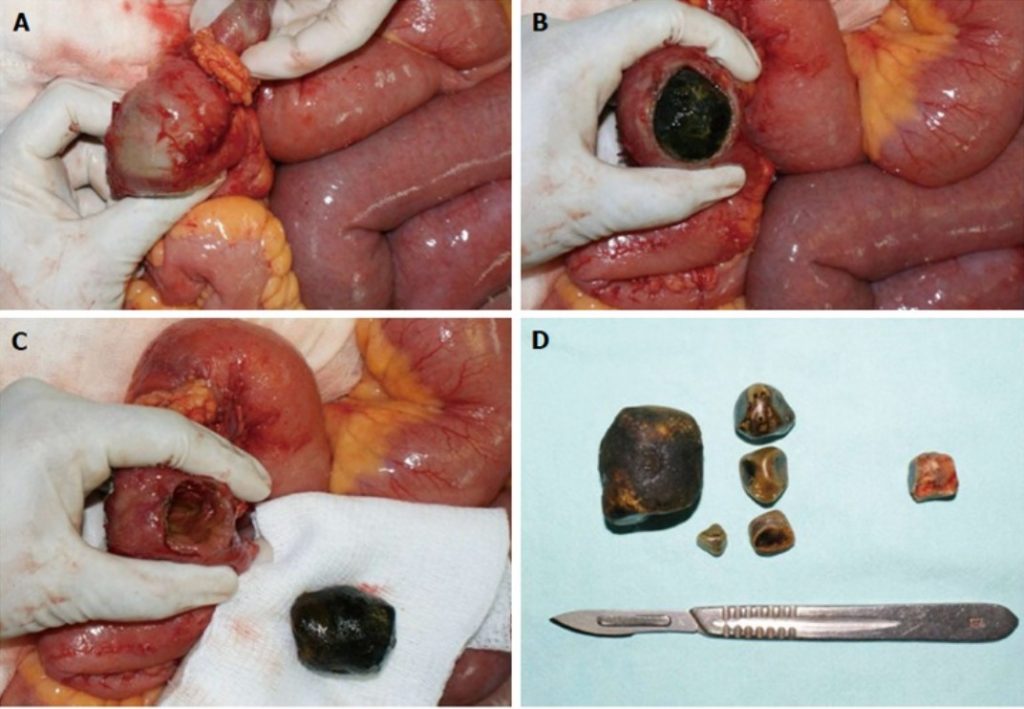
One of the lesser known but more serious complications with gallstones is intestinal obstruction. Over a long period of time, gallstones can find their way out of the gallbladder and into the intestine to obstruct the flow of the intestine. This is a condition known as gallstone ileus. The problem is infrequent and affects elderly patients most of the time who are also dealing with a host of other medical issues. Treatment would normally require surgery. Typical example can be seen with the following photos:Stone palpated within intestineStone identified with intestine openedStone removed from intestineMultiple stones retrieved from intestineWorld J Gastrointest Surg. 2016 Jan 27; 8(1): 65–76.
What is a pilonidal cyst?
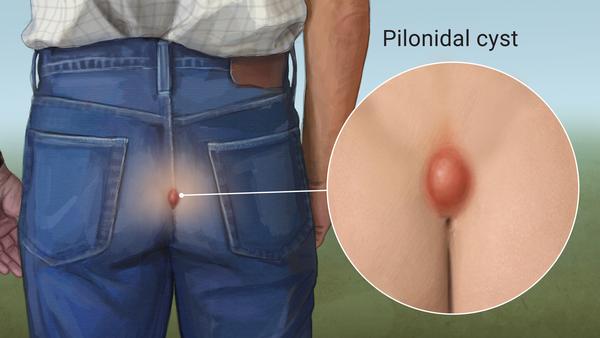
A pilonidal cyst is a chronic condition cause by hair and debris collecting underneath the skin resulting in intermittent infection. most always located near the tailbone at the top of the buttocks.
Symptoms include pain, red irritated skin, drainage or pus from the skin, and foul smell from the pus/drainage.
Pilonidal cysts are normally caused by hair that punctures the skin, becoming embedded. This can be extremely painful if infected. Treatment is usually drainage through a small hole or surgery to remove the cyst.
What Is A Strangulated Hernia?

What is Cholecystitis?

Cholecystitis is inflammation or swelling of the gallbladder that occurs when bile (a fluid that helps with digestion) gets trapped in the gallbladder.
Massive 5cm Gallstone!
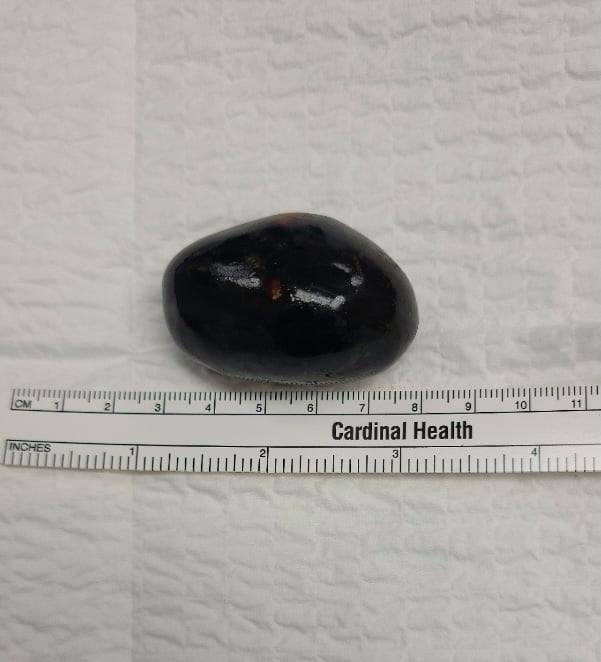
Here is a massive 5 cm gallstone I removed from a patient’s gallbladder. Now, imagine up to 50 of these piled up in gallbladder, blocking the bile duct! This is why I say if you are experiencing pain in your abdomen, get it checked sooner than later. An ounce of prevention is worth a pound of cure!
Diverticular Fistula
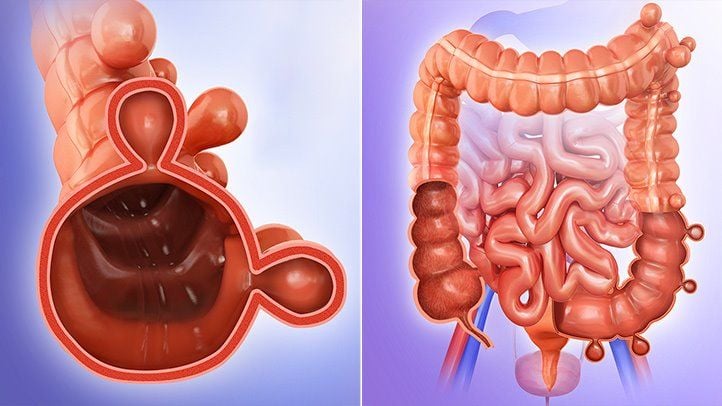
A fistula is an abnormal connection between two organs that can develop from infection, inflammation, injury, or cancer. From diverticulitis, a fistula can form between the colon and any organs within the abdomen such as bladder, vagina, uterus, small intestine, or skin. The problems that arise from a diverticular fistula depend on the specific organ that has the connection with the colon. Diagnosis and treatment of a diverticular fistula can be a complicated and prolonged process involving different specialties but can definitely result in a successful outcome.
Image from everydayhealth.com
What is Peritonitis?
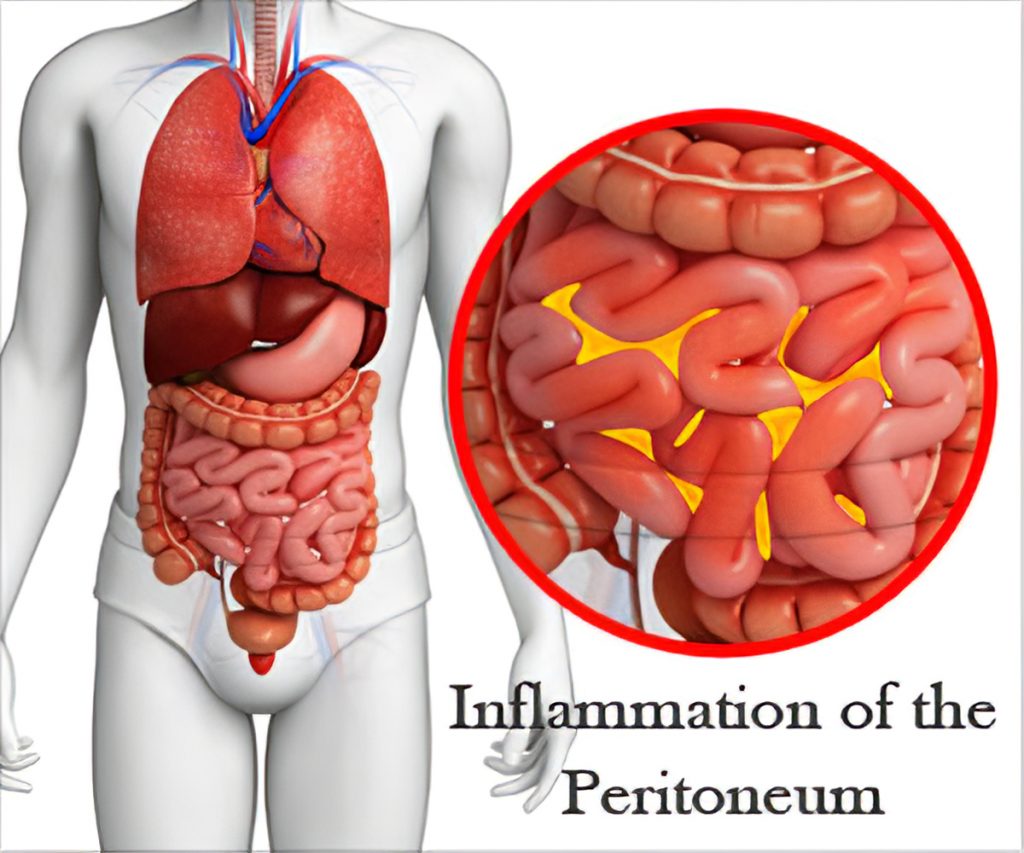
The peritoneum is a membrane that lines the abdominal cavity to act as a warning mechanism in case something is wrong with one of the internal organs. Peritonitis is a term used for inflammation or infection of the peritoneum.
The symptoms of peritonitis can range from mild to severe and can occur in one part of the abdomen or the entire abdomen. Some of the symptoms include bloating, pain, nausea, vomiting, constipation, fever, trouble breathing, or weakness.
Treatment for peritonitis depends on what is the underlying cause but usually includes a hospital admission, IV antibiotic, and/or surgery.
Consult with our office at 732-888-9400 or your own physician if you have some of the above symptoms or just don’t feel well. To learn more, visit us on Instagram at @hungqnguyenMD and https://www.facebook.com/ComprehensiveSurgicalCare
What is Sigmoid Volvulus?
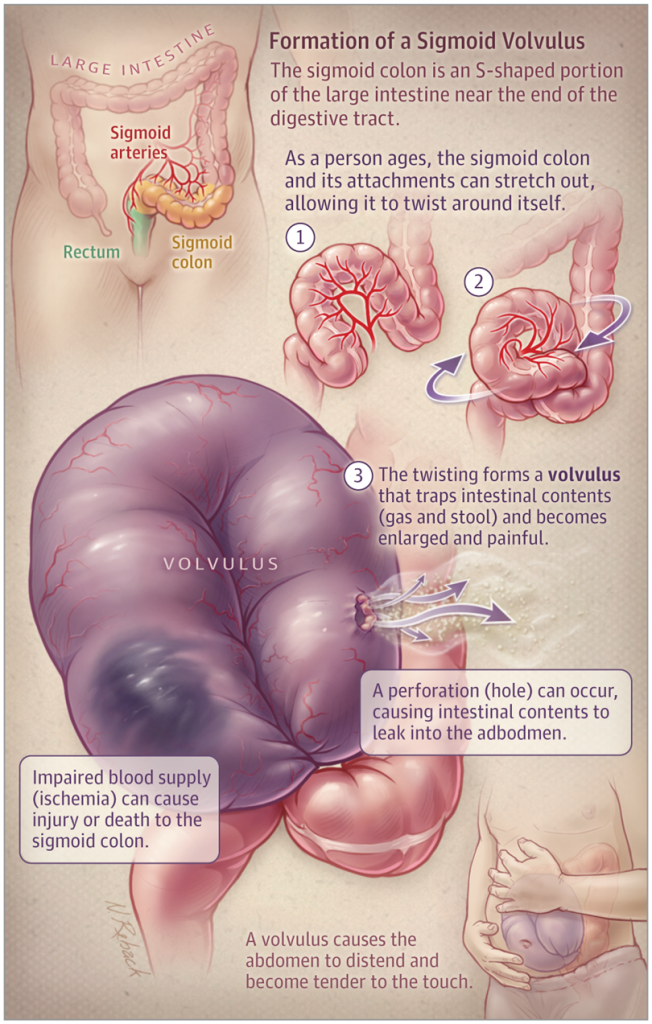
Imagine a condition where the sigmoid colon stretches out so far to twist around itself. This is what is called sigmoid volvulus. The sigmoid colon is a part of the colon above the rectum normally shaped like an S but because of the volvulus, a complete blockage of stool passage can occur. Even more, the blood supply to the twisted colon can be cut off causing this part of the colon to die. Symptoms include abdominal pain, bloating, constipation, nausea, vomiting and inability to pass gas. The abdomen can become severely swollen and tender to the touch. Treatment will usually require some form of surgery.
Sigmoid volvulus can be a life threatening condition left untreated so stay in tune with your body and seek help when any of the above symptoms are present.
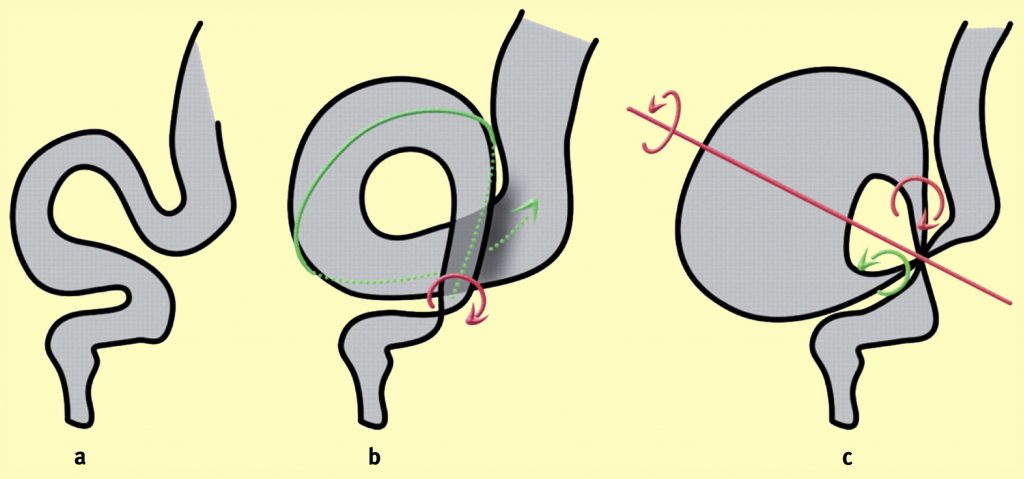
What is Intussusception?
Sigmoid volvulus can be a life threatening condition left untreated so stay in tune with your body and seek help when any of the above symptoms are present.

Intussusception is a very rare condition where one part of the intestine slides into another — often blocking food and fluids from passing through, and cutting off circulation to that part of the intestine. It may lead to an infection, a tear in the bowel or even death of the intestinal tissue. The condition is most common in children, and is the most common reason for intestinal blockage in children under the age of 3. Symptoms may include stool mixed with blood and mucus, vomiting, diarrhea, a lump in the abdomen, and weakness. Specifically in children, a common symptom is crying every 15-20 minutes as pain comes and goes. In adults, because the symptoms overlap with so many other conditions, it is more difficult to diagnose. If your child is experiencing these symptoms, it is important to seek medical attention right away to diagnose the issue.
Gut Pain Not to Be Ignored
Check out this great article about Dr. Nguyen’s robotic surgery on patient, Joe Palazzo, and how minimally invasive surgery is leading to happier, healthier clients with less pain and a much faster recovery! via Hackensack Meridian Health
Pancreatitis

The pancreas is the main organ that makes enzymes to digest food and produces Insulin to maintain the sugar levels in our body. It is long and slender, looking somewhat like a leaf that resides in the upper abdomen behind the stomach. Because of this unique location, when there is inflammation of the pancreas there is usually pain to the upper abdomen and the mid back. There may also be nausea, vomiting, bloating, fever, indigestion, fast heart rate, jaundice or changes in stool. The two most common causes of pancreatitis are gallstones and alcohol. Many other known causes are less common. Treatment for pancreatitis usually involves removing the agent that caused the pancreatitis and allow the pancreas to heal itself. In case of gallstones, removing the stones and the gallbladder are needed to prevent pancreatitis from recurring. Visit my YouTube channel for a glimpse of how gallbladder surgery or cholecystectomy is performed & feel free to subscribe. More videos on the way:https://www.youtube.com/channel/UCD_i7nU6AKieiD12P1mArOA?view_as=subscriber
Skin grafting
Skin grafting is a procedure where the surgeon removes skin from one area of the body and transplants it elsewhere. The surgery is an option for victims of injuries with large wounds such as bed sores, burn injury, skin cancer or skin infection. The two types of skin grafts are split thickness and full thickness.For a split thickness graft, the surgeon will remove the epidermis (the top layer of the skin) and some of the dermis (the deeper layer) from a donor site in the patient’s body where the skin is healthy. The advantage to this technique is the ability to cover large areas that need new skin. The final product, however, will still look like the skin from the original site where the graft was taken. A full-thickness graft is typically good for areas where appearance and function are important since it is able to blend better with the surrounding skin hence less noticeable than a split-thickness graft. For this type of skin graft, the whole thickness of the skin including the epidermis and dermis is taken from a donor site of the body. The main limitation to this technique is only a small area of defect can be covered by a full thickness skin graft.During surgery, skin is removed from the donor site, placed over the graft area and attached with surgical dressing, stitches or staples. The surgeon may punch small holes in the graft in order to stretch out a piece of skin. This will allow less skin to be used from the donor site and also help fluid easily drain from the graft. Within 36 hours of surgery, the skin graft should begin to form blood vessels and begin connecting to the skin around it. For more information on what type of skin graft is suitable for your need, schedule your consultation with us at 732-888-9400.**Photos via asc-psd.com & dailymail.co.uk
Squamous cell carcinoma
Squamous cell carcinoma (SCC) is the 2nd most common form of skin cancer. This condition is caused by abnormal growth of the skin’s squamous cells. Squamous cells are flat cells located in the epidermis (the outermost layer of the skin). The cells shed continuously as the skin forms new cells. SCC (Squamous cell carcinoma) occurs because of the damaging effects of sun rays onto the skin cells’ DNA. The cancer may appear in a variety of different ways: red patches, open sores, a growth or rough, thick patches of skin. This cancer commonly appears on areas of the skin that are often exposed to the sun, but can appear pretty much anywhere. The good news is, SCC can usually be easily treated and cured. However, early detection is key. If left untreated, they can become disfigured, grow into deeper layers of the skin and even spread to other parts of the body. There are many ways of treating SCC depending on the size and location: targeted treatments, topical chemotherapy, cryotherapy (freezing the cancerous spot with nitrogen) and excision (cutting out the cancer and some healthy skin around it and then stitching it back up).To prevent and protect yourself you can avoid tanning beds, avoid the sun during peak hours, wear clothing that protects exposed skin, wear sunscreen or hats when you will be in the sun for a prolonged period. As I often like to recite the quote: “An ounce of prevention is worth a pound of cure”. If you or someone you know think that you may have this or any form of skin cancer , give us a call at 732-888-9400 for a comprehensive evaluation and treatment options!
Porcelain gallbladder
Porcelain gallbladder is a form of chronic cholecystitis. Scars from inflammation combined with calcium deposits are some of the mechanisms thought to cause the gallbladder to have a porcelain look.Symptoms include pain in the abdomen, vomiting and jaundice but the condition can also be asymptomatic. It is sometimes discovered incidentally on imaging for other conditions. It can be diagnosed by an x-ray, a CT scan or an abdominal ultrasound. Because of an unclear association of porcelain gallbladder to gallbladder cancer, cholecystectomy is the recommended treatment. A cholecystectomy is the removal of the gallbladder. Laparoscopic cholecystectomy is performed with a tiny camera and surgical tools inserted through small holes in the abdominal wall to allow the surgeon to remove the gallbladder. For more info on cholecystectomy, see our article on acute cholecystitis.Cholecystectomy is a very common procedure that treats a variety of diseases of the gallbladder. Give us a call at 732-888-9400 if you are experiencing symptoms or have been diagnosed with porcelain gallbladder, gallstones, gallbladder cancer or cholecystitis so we can get you on the road to recovery soon!
Acute cholecystitis
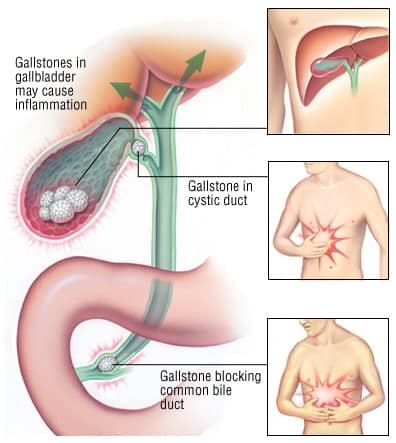
Acute cholecystitis is the most severe form of inflammation of the gallbladder. The cause is usually the result of gallstones blocking the cystic duct. When this happens, substances normally released into the bile duct are trapped, and inflammatory enzymes are released causing the acute inflammation. The symptoms usually increase over time and may include pain on the upper right side of the abdomen, chills and fever, nausea and vomiting. Treatment is usually surgery, known as cholecystectomy, to remove the inflamed gallbladder. Laparoscopic cholecystectomy is performed with a tiny camera and surgical tools inserted through small holes in the abdominal wall to allow the surgeon to remove the gallbladder. This is a widely common procedure with low risks and patients may go home the same day. Recovery is often quick so that you may be able to return to normal activity within a few days or no more than a week. Give us a call at 732-888-9400 if you are experiencing symptoms or have been diagnosed with gallstones or cholecystitis so we can get you on the road to recovery soon!
Umbilical hernia
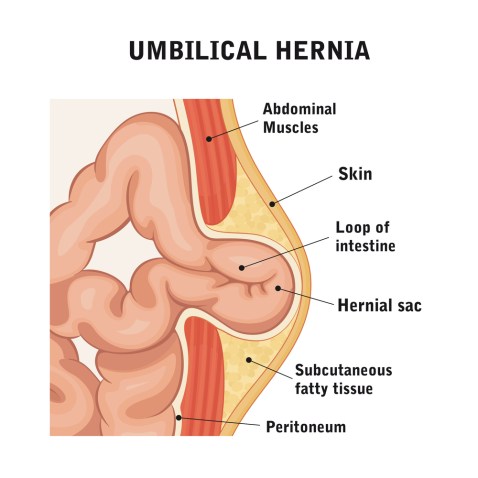
An umbilical hernia occurs because of a weakness at the umbilicus causing tissues in the navel to push through. The result is a bulge at the belly button sometimes called an “outie”. There may be pain, pressure, or bluish discoloration at the hernia site. The old adage “if it doesn’t bother you then leave it alone” is not necessarily good advice. The mechanism for a hernia to develop is because of the weakness in the layers of the abdominal wall. Over time, the weakness will naturally become larger hence a larger bulge. Surgery to fix a larger hernia likely has more risks then a smaller hernia. As with all hernias, if left untreated, there are risks for serious complications with strangulation or incarceration. Strangulation is the more serious of the two where the severe constriction would cut off the intestine’s circulation leading to ischemia or dead bowel. An incarcerated hernia is where the intestine becomes trapped in the hernia’s pouch causing intense pain and risk for strangulation. Both conditions require emergency surgery which has more risks and longer recovery. “An ounce of prevention is worth a pound of cure” is especially true in all aspects of medicine. As is the case in all hernias, small hernias are simpler to deal with than larger ones. Give us a call at 732-888-9400 for a comprehensive evaluation and treatment options if you think you have a hernia.
Acute appendicitis
We commonly hear about, and have discussed in a previous blog, acute appendicitis. The typical treatment is to remove the appendix when the diagnosis is made. However, if an acute appendicitis is left untreated for too long, an even more serious condition called perforated appendicitis can develop. This is a situation where the appendix ruptures, causing release of the built-up infection into the abdominal cavity. As a result, an infection that would otherwise be limited to the appendix is then able to spread to the rest of the abdomen and/or body — called peritonitis and sepsis respectively. Other serious problems that can develop from a ruptured appendicitis are abscess formations, intestinal blockage, and all the bad problems of sepsis. Perforated appendicitis can also be fatal, even with maximal treatment. Once these conditions develop, then the treatment will be more complicated and the recovery will take longer. Therefore, it is always best to treat acute appendicitis appropriately before complications with perforated appendicitis arise. Consult with your doctor about acute appendicitis and the potential problems that can develop if left untreated.
Adhesions
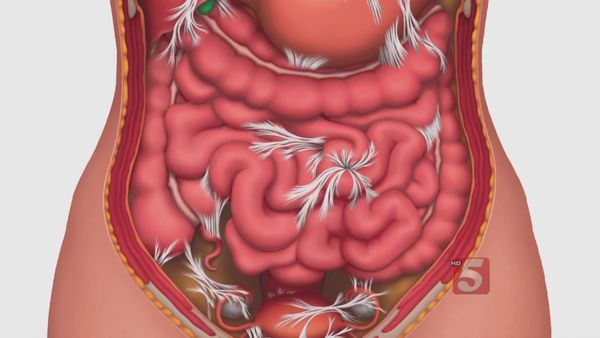
Another one of the many conditions I treat are adhesions. Adhesions are scar tissue binding two parts of tissue together that are not normally connected. They can appear all over the body and on the surface of multiple organs such as the liver, uterus and gallbladder but today, I want to talk about abdominal adhesions. Abdominal adhesions are scar tissue that can form throughout the abdominal cavity. They can cause pain, or more seriously can cause blockage in the bowels, which leads to other symptoms like nausea and vomiting. Adhesions are usually found through laparoscopy– a procedure where the surgeon pushes a camera through a small hole in the abdomen to see the organs. The surgeon is usually able to remove the adhesion during the same surgery. Adhesions are removed simply by cutting with a scalpel. Adhesions can reform after being removed and unfortunately some people are more susceptible to adhesions coming back. In some cases, a surgeon may use Seprafilm — a thin, wax-like film that will be placed on the incision. It will heal and scar as usual but the Seprafilm can help to reduce scar formation in some cases. If you or someone you know has been diagnosed with an adhesion, feel free to call us and talk to Lori to get you set up, 732-888-9400.
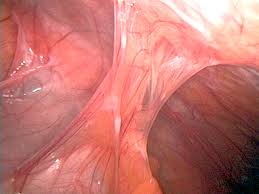
Carcinoid Syndrome
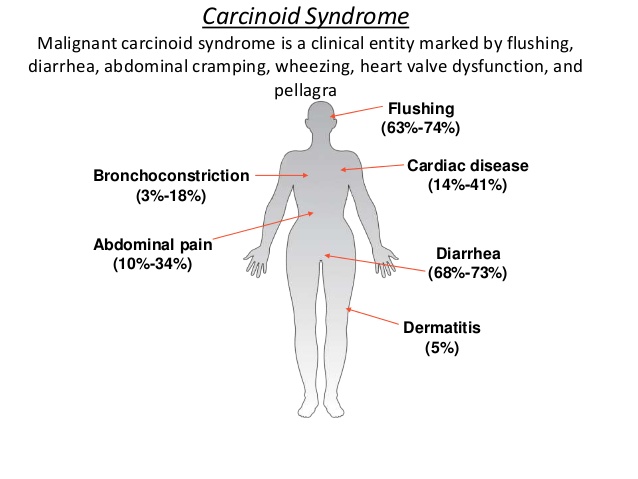
One of the many conditions I treat is a rare disease called Carcinoid Syndrome. The condition occurs when a carcinoid tumor releases dangerous chemicals into the bloodstream. These tumors typically exist in the lungs or the GI (gastrointestinal) tract and usually occur in people with carcinoid tumors in the advanced stage. A cure is not always possible but a doctor can help treat the symptoms.Common signs and symptoms of Carcinoid Syndrome include flush skin, diarrhea, trouble breathing, increased heart rate and lesions on the face. The symptoms vary and depend on which chemical the carcinoid tumor is releasing into the bloodstream. The condition can lead to other problems such as bowel blockage, Carcinoid heart disease, Carcinoid crisis ( severe flushing, trouble breathing and confusion– can be fatal). Part of treatment for Carcinoid Syndrome is taking care of the tumors that cause it. Depending on the location of the tumor, it could be removed via surgery or treatments like chemotherapy or radiation may be used. Medications may also be used for immunotherapy. While this condition is rare, remember to see your physician regularly to make sure you are healthy and always see a doctor if you are experiencing any symptoms. It is always better to catch the problem early!
Colon Cancer
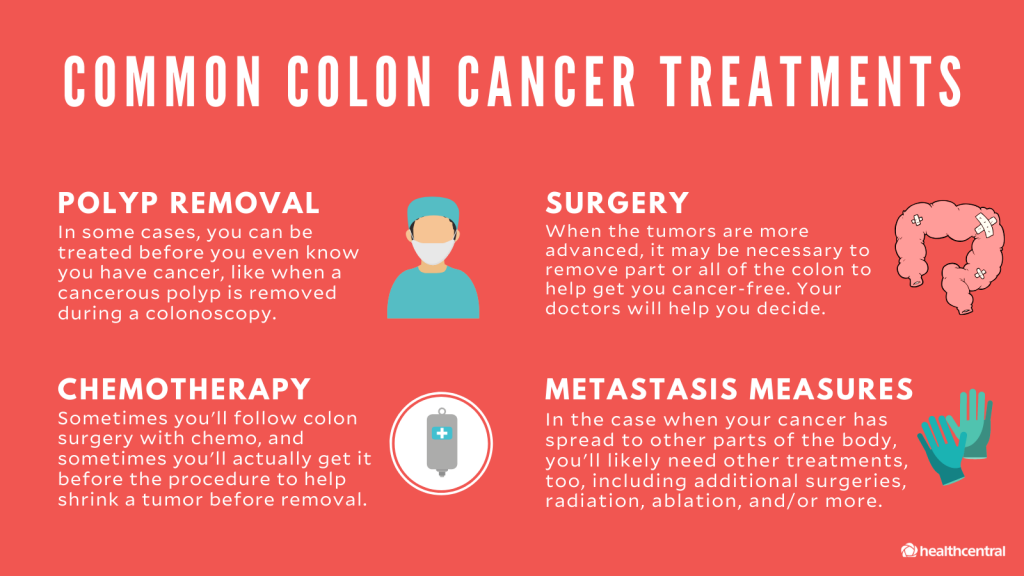
I treat over 80 conditions and diseases. One of the more frequent conditions I come across is colon cancer. Your colon is your large intestine– the end of your digestive tract. Colon cancer usually starts as a non-cancerous group of cells that we refer to as polyps. Polyps can grow over time and eventually become cancerous. Colon cancer usually occurs in older adults, but can happen to anybody. The polyps usually don’t produce any symptoms so colon cancer may be forming inside of a person while they don’t even know it, which is why I recommend getting screened regularly. We can solve the problem long before it becomes a big issue! Symptoms of colon cancer include weight loss, fatigue, persistent gas, cramps or pain in the abdomen, blood in the stool. If you are experiencing any of these symptoms, I recommend making an appointment with your doctor. It is usually suggested to begin regular screening for colon cancer at the age of 50, but depending on family history and other conditions you may have, you might like to be checked sooner. There are some things to help prevent this condition. Eating lots of fruits and vegetables, drinking less alcohol, not smoking, and being active, exercising regularly can lower your risk! To treat colon cancer, there are several options, depending on the size and location of the tumor. Like I mentioned before, you can have polyps removed before cancer even gets a chance. Once cancer has formed, it can be removed by surgery. In some cases, parts of the colon and occasionally the colon as a whole may be removed. Chemotherapy and radiation are also options, specifically if the cancer has spread to other parts of the body. If you or someone you know has colon cancer, or is experiencing symptoms, feel free to call us and get checked! Call today and our office manager, Lori, can set you up with an appointment. 732-888-9400
Stomach Cancer
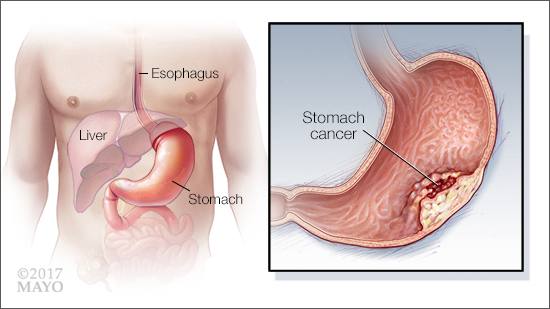
Your stomach is an integral part of the digestive system. Cancer of the stomach can be serious, depending on how far along it is and it often tends to develop without creating many symptoms in the early stages. Cancer, simply put, is when the cells in a certain part the body begin to rapidly grow out of control. There are several different types of stomach cancer. Adenocarcinoma is cancer that forms from the cells in the innermost lining of the stomach, the mucosa. Over 90% of cases of stomach cancer are Adenocarcinoma. Another type is Lymphoma– cancer of the immune system tissue, which is often found in the stomach’s wall. The third form is GIST or Gastrointestinal stromal tumor, which form in very early stages of the cell’s life. They can be benign or malignant. The fourth form of stomach cancer is carcinoid– a cancer that forms in the hormone making cells and can spread to other parts of the body. There are tons of symptoms of stomach cancer: Unexplained weight loss, loss of appetite, feeling full even though you haven’t eaten much, heartburn, nausea, blood in stool, low red blood cell count. The tricky part is that so many of these symptoms could be something as simple as a stomach virus or just an upset stomach. Because these symptoms so easily go unnoticed, only 1 in 5 cases of stomach cancer is found before it has already spread to other parts of the body. There are several different approaches to treat stomach cancer: immunotherapy, chemotherapy, radiation and surgery. Depending on the type of cancer and how far along it is, the cancer and even some parts of the stomach may be removed by surgery, and also potentially some lymph nodes. The surgeon makes it their mission to leave as much of the normal stomach as possible. In some cases, the stomach as a whole may be removed. In some cases, it may be impossible to remove the cancer completely. We call this palliative surgery. It will relieve symptoms but isn’t expected to cure the cancer. The good news is that technology has come so far, that 98-99% of patients with stomach cancer survive surgery, as serious as it is! And the odds are even better in the hands of a skilled surgeon.
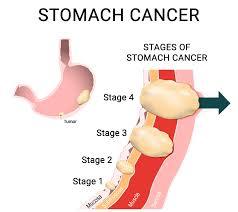
Inguinal Hernia
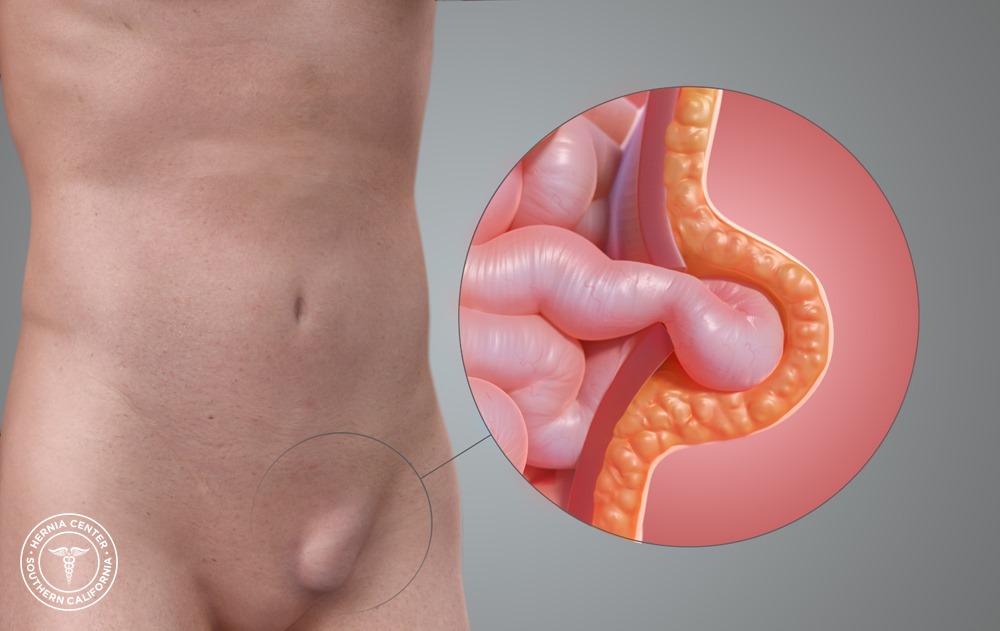
An inguinal hernia is when your soft tissue is protruding through a weak area in the lower abdomen. These weaknesses in the abdominal wall can be due to birth defects or form later. And usually, hernias form as a result of heavy lifting, chronic coughing, obesity, pregnancy, fluid in the abdomen. You may have an inguinal hernia if you notice a bulge in the groin area. If that bulge is aching or painful during certain activities like bending, lifting an item or even when coughing, it is likely you have a hernia. A lot of doctors may suggest that immediate treatment of a hernia is unnecessary if it’s not causing any problems. However, I tend to recommend taking care of it right away seeing as they rarely get better on their own and it can become a serious problem later. If a hernia becomes incarcerated (your intestines become twisted), it can be dangerous. Symptoms of an incarcerated hernia include fever, pain, increased heart rate, and the bulge becoming discolored and dark.To remove an inguinal hernia, a doctor will put you under anesthesia, locate the hernia and separate it from the tissue. The surgeon will then push the herniated tissue back into the abdomen and stitch the weakened or torn muscles in the abdomen. Thanks to technology, laparoscopic and robotic surgery can make a smaller incision, leading to less pain and a faster, easier recovery for you and you can be back to normal life within a few days!If you suspect you may have a hernia, don’t hesitate to give us a call so we can get you on the road to recovery! 732-888-9400

Melanoma
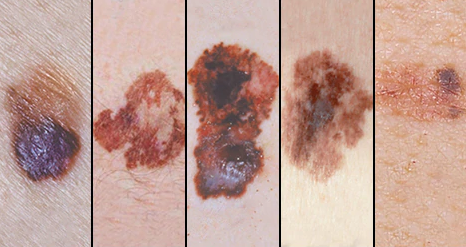
Melanoma is a type of skin cancer that develops in the melanocytes — the cells that give your skin pigment and color. While the specific cause of melanoma isn’t clear, it has been linked to prolonged exposure to UV rays from the sun and tanning beds. Usually occurring in parts of the body most exposed to the sun, like the face, back, legs and arms, it can also appear in the eyes, nose and even the throat. Early signs of melanoma are changes to an existing mole on your skin or a new mole-like, discolored patch on your skin. Moles are natural and not necessarily something to worry about. Many of us are born with them and you can even develop new ones up until the age of 40. There are several different ways for you to tell if a mole may be melanoma. Most moles are somewhat symmetrical. So if one develops with significantly different looking halves, you may want to get it checked out. Melanoma will look more irregular and misshapen with patchy borders, that are not very discernible from the skin. If a mole has multiple different colors or an uneven distribution of colors, it may be melanoma. A new growth that is more than 1/4 of an inch may also be melanoma. And an existing mole CAN become melanoma, so if you notice changes in size, shape or color, you should get it checked out. Small melanomas can be removed with surgery. If it is small enough, you may require no further treatment. If it is larger and more invasive, the surgeon may also remove the border of the skin around it and the tissue underneath as a precaution. In some instances radiation and chemotherapy can also help to eliminate the cancer. If you or somebody you know suspects you may have melanoma, call us for a consultation so we can help you figure it out and help you on the road to recovery today! 732-888-9400.
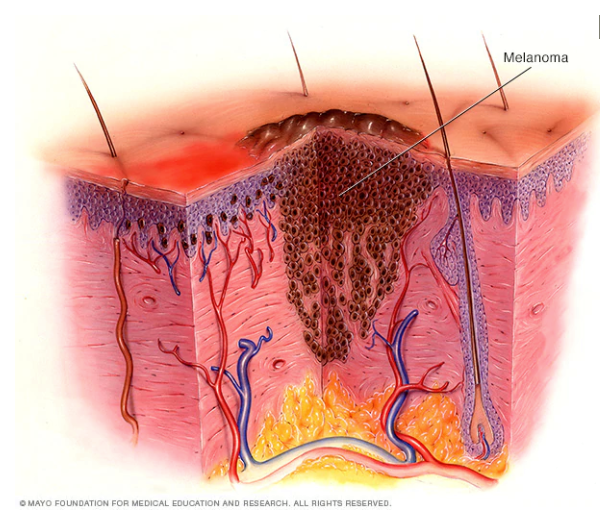
Splenectomy
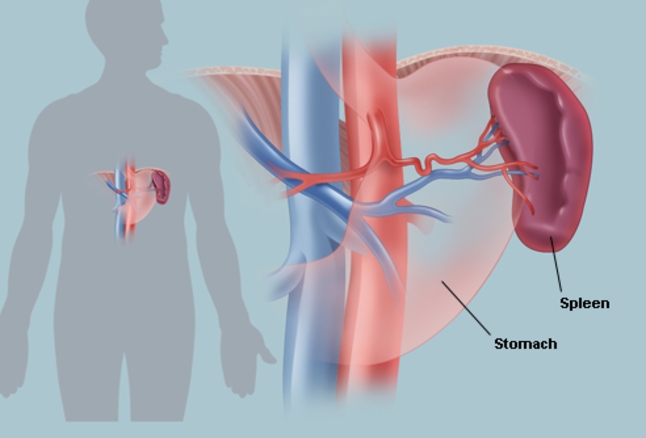
Your spleen, the largest organ in the lymphatic system, plays an important role in keeping you healthy! Located on the top left of your stomach, the spleen’s job is to filter your blood– recycling old red blood cells and storing white blood cells and platelets. It also fights against infections & bacteria that cause meningitis & pneumonia. While the spleen is very helpful for your body’s immune system, the truth is that you can live without it, and other organs will take over its functions. “Splenectomy” simply means the removal of the spleen. The procedure can be done to treat a ruptured spleen, an enlarged spleen, infections, certain cancers & tumors. There are often other ways around these conditions so splenectomies are rare and people can generally live normal lives without a spleen if necessary.
Lipoma

A lipoma is a lump of fat in your soft tissue, in between the skin and muscle. It is a benign tumor, which is usually painless. The cause of a lipoma is not exactly known yet, but they tend to appear after some sort of injury or can be caused by a very rare disease called Madelung’s disease. Anytime you find some sort of lump on your body, you should go get it checked out by a doctor. Lipomas are often easy to identify because they are usually painless and feel soft and doughy. If it is a lipoma that you have, doctors often choose not to do anything about it. They are not typically harmful. Of course, if you don’t like how a lipoma looks, or if it is painful, you can ask a doctor to remove it. It is a simple and quick surgery where the doctor injects you with a medication to numb the area and then makes a small incision to remove the mass. Patients can usually go home the same day. Feel free to drop a comment or send us a message if you have any questions about this condition!
Gallbladder attacks
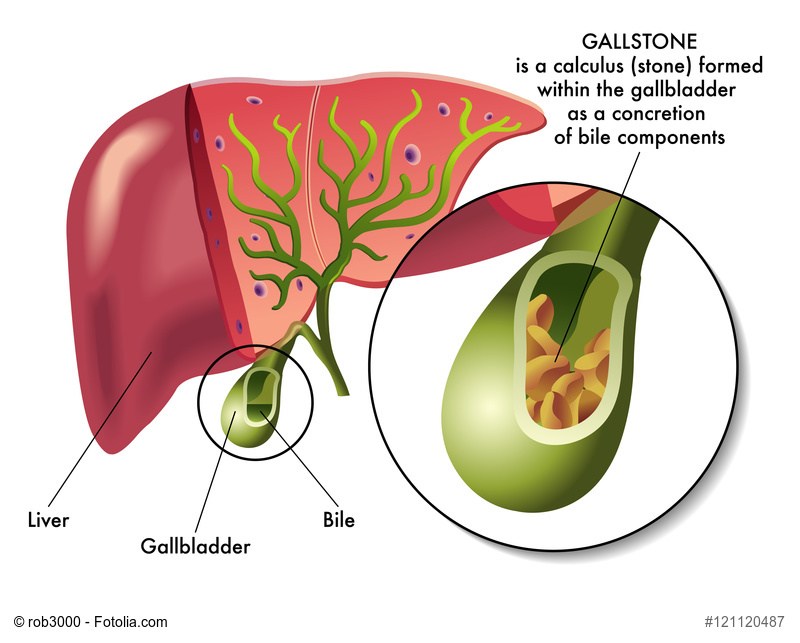
What is a gallbladder attack? Your gallbladder is a small sack on the top right side of your abdomen, which purpose is to store bile created by the liver. The bile helps your body break down fats and absorb important vitamins. When your body digests foods, the liver and gallbladder release bile into the intestines to help the process. Sometimes, fats, proteins and minerals from your body can create “gallstones”. They are literally little, tiny pebbles that can block the bile duct and yes, that can become very painful! Symptoms of a gallbladder attack include sudden, sharp pains, cramping and tenderness in the abdomen. Pain from these attacks can even travel to the right shoulder or in the back between the shoulder blades. Nausea, vomiting, fever and chills may also occur. There are are few different ways to treat a gallbladder attack. A medicine called ursodeoxycholic acid may be used to help break down the gallstones, if they are small and if you are not experiencing serious symptoms. If pain doesn’t ease up, you may need surgery. A cholecystectomy is where the surgeon will remove the entire gallbladder. Endoscopic retrograde cholangiopancreatography (ERCP) is a procedure where the surgeon will pass a camera all of the way through the mouth down into the opening of the bile duct, where they can then remove the gallstones from the duct. Gallbladder attacks can be serious and there are some things you can do to protect yourself. Losing weight, exercising, and lowering your cholesterol through a balanced diet with plenty of veggies can help.
Stomach Ulcer

A stomach ulcer is simply a sore in the lining of the stomach. They can be painful and coincidentally, pain is the first symptom of an ulcer! In your stomach, there is a thick layer of mucus protecting its lining. When that mucus becomes reduced or thinned, the acids your body uses to digest food can begin to eat away at the tissue that lines your stomach — resulting in an ulcer. There are two main causes of an ulcer:- an infection from the bacteria, H. pylori-long-term use of anti-inflammatory drugs (aspirin, ibuprofen, etc.)The most common symptom of a stomach ulcer is a burning feeling in the middle of the abdomen, between the chest and belly button. You can also experience bloating, acid reflux, heartburn, dark stool. Ironically, pain can improve when you eat or drink. This is also a symptom. Ulcers can usually be easily treated when detected early. They can become serious and require more serious treatment, and even surgery. For a mild stomach ulcer, a doctor may prescribe you an antibiotic and a drug called a PPI or proton pump inhibitor, which blocks cells that produce acid in the stomach. If you suspect you may have an ulcer, visit your primary care doctor for diagnosis. And if you are seeking treatment for an ulcer, feel free to give us a call. 732-888-9400
Diverticulitis
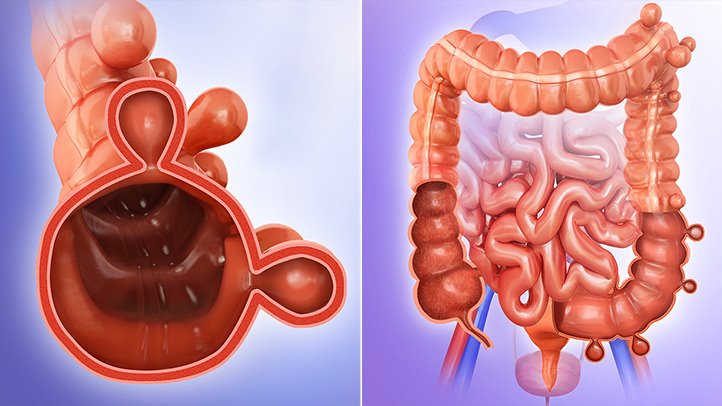
Diverticulitis is an infection or inflammation of the pouches that form in your intestine. The pouches, called diverticula, are perfectly natural and in general, they’re not a problem. It is only when they become inflamed or infected that issues may arise. Diverticulitis symptoms may include cramping on the left side of the abdomen, bright red blood in your stool. If the infected pouch obstructs the intestine, it can lead to bloating, diarrhea and increasingly severe abdominal pain. These symptoms are similar to a number of other diseases so if you are experiencing any of them, be sure to see your doctor. A mild case of diverticulitis can be treated with a liquid diet and sometimes, antibiotics. A severe case can lead to an abdominal abscess or peritonitis, in which surgery would be required.The best way to prevent these complications is to drink plenty of water, eat plenty of fiber and exercise on a regular basis.
Appendicitis

Appendicitis is no fun. It can be extremely painful and uncomfortable and is often accompanied by nausea and fever. The appendix is an interesting organ because the truth is, we STILL aren’t sure exactly what it does for our bodies. It is believed to help us recover from diarrhea, inflammation and intestinal infection but it is an organ that our bodies don’t actually need. So, when the appendix becomes inflamed, the easiest way to fix the problem is to simply remove it! Yes, if you are experiencing symptoms of appendicitis, you should see a doctor right away. As urgent of a problem as this might be, the surgery should be easy on the body and the recovery is quick. With today’s technology, the doctor controls a robot to make tiny incisions and to help with precision and effectiveness. That means smaller scars, less pain and a quicker recovery. Many of our patients are feeling no pain at all within 2 or 3 days. It is amazing what technology can do!




